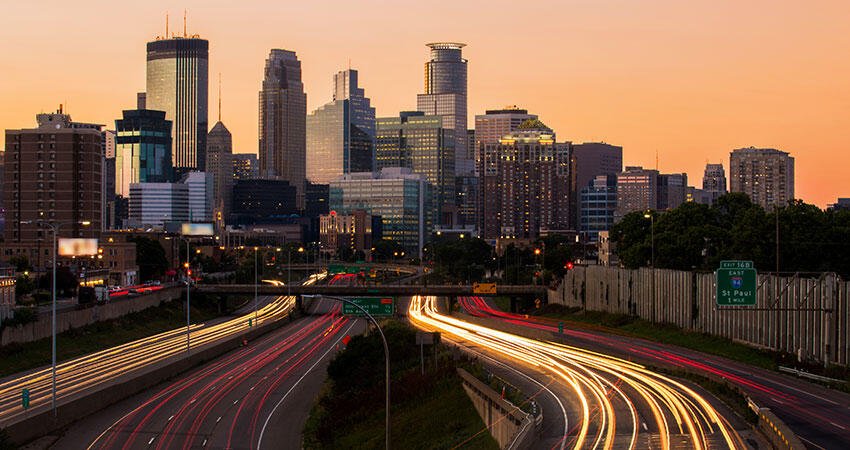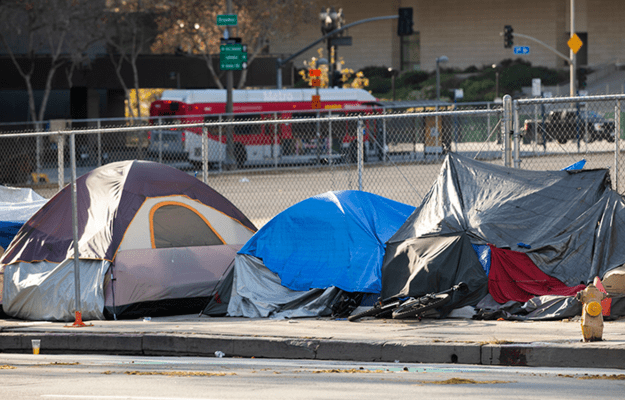
Hard Choices: How Moving On and Off Reservations Can Increase the Risk of Homelessness for American Indians
American Indian1 households move more often than American households do overall, and an increasing share of American Indians live in metropolitan areas, including in nontribal areas. Although many people find stable housing in urban areas, not all do. With few resources and supports to help ease the transition, multiple moves can increase the likelihood of homelessness for American Indians who already are overrepresented in the national homeless population (PDF).
What motivates these moves, why are they leading to an increased risk of homelessness, and what efforts are being made to prevent native housing instability?
Housing conditions and opportunities on and off reservations affect mobility decisions
The reasons many American Indians move from reservations or other tribal lands to towns and cities have remained consistent over time. Some people move seeking education and employment opportunities beyond what’s available on a reservation or to access more comprehensive health care or other needed services. Family members who moved in the past can serve as a draw for those considering relocating to an urban area. American Indians also may choose to move away from circumstances they face on the reservation, such as poor or crowded housing conditions, or for personal and family reasons. Moves are not always final—some people return to Indian Country and some move back and forth. People may return because of strong ties to a reservation or because anticipated opportunities didn’t pan out.
Moves between reservations and off-reservation metropolitan areas can strain already limited resources and increase the risk of homelessness
Many American Indians have few good options for housing or support if they are unable to secure decent, affordable, stable housing in urban areas. Unfamiliarity and discomfort with mainstream service providers can lead to precarious housing situations. Coupled with a paucity of American Indian–targeted housing and supportive service providers, the overall lack of resources can push people into homelessness, leading them to stay in a shelter, sleep on the street, or double up with family or friends. For those able to move back to reservations, breaking the homelessness cycle is not always a guarantee. Insufficient affordable housing can result in homelessness, which, in the tribal context, often means living with family or friends in overcrowded conditions by doubling up, or “couch surfing,” rather than living on the street.
Promising strategies to break the cycle of housing instability and homelessness for American Indians
Though tribes are the best suited to provide culturally appropriate housing services, they have limited resources to operate outside of tribal lands. Tribal status makes them ineligible for grant funds through Continuum of Care organizations, though a recent bill passed in the House of Representatives aims to change that.
In the meantime, here are three promising strategies housing and service providers can take to break the cycle of housing instability for American Indians.
1. Foster collaboration among on- and off-reservation organizations. Because American Indians increasingly move back and forth, organizations on and off reservations often serve the same people. Working together, organizations can better identify service needs, provide more continuity, and leverage resources. For example, a homeless encampment near downtown Minneapolis, where a mostly American Indian population was living, stimulated tribal nations to address an urban crisis. The Red Lake Nation offered to help build temporary shelters on land it had bought for a permanent housing development. Other tribes in Minnesota supported the Red Lake Nation’s proposal, forming a partnership to win concessions from local officials and secure emergency relief. Although this was a temporary solution until the Red Lake Nation broke ground on its housing complex, it has brought tribes, urban nonprofits, and the city together to address urban homelessness among American Indians. For example, the Metropolitan Urban Indian Directors are teaming with community organizations to provide immediate services and to plan for long-term housing.
2. Provide supportive, culturally appropriate services, both on and off reservations. Providing services in a way that reflects an understanding of the history, language, values, and customs of American Indians can improve the effectiveness of outreach and increase participation in available support and training services. Housing that respects cultural preferences, such as proximity to extended family, keeping families together, and communal gatherings, may reduce the need to move.
For example, in downtown Duluth, the American Indian Community Housing Organization operates Gimaajii Mino-Bimaadiziyaan, a supportive housing project for long-term homeless families and individuals that caters to the cultural and the housing needs of its residents. The center is the first in the nation to combine permanent supportive housing with an American Indian community center. With funding from over 20 organizations and support from several tribes, the center has 29 housing units and provides eligible residents with counseling and support services.
On the Pine Ridge Reservation, the Oglala Sioux operate a shelter for homeless veterans that provides temporary housing and assistance for up to 12 homeless veterans. The shelter provides supportive services to advance the veterans’ self-determination, both through traditional skill building and job support and by encouraging veterans’ to celebrate Lakota traditions and participate in community life.
3. Test innovative housing models that expand options on and off reservations. Housing models that go beyond the standard apartment or single-family models reflect the belief that a community approach can best serve those who are experiencing housing instability. In the Twin Cities, the nonprofits Ain Dah Yung Center and Project for Pride in Living opened a 42-unit building that offers permanent supportive housing for 18- to 24-year-old American Indians. The project connects homeless young adults to therapy and staff who help them find a job or enroll in school. The building was designed to reestablish and strengthen the cultural identity of the young adults through classes, a sweat lodge, and a traditional medicine garden.
In Portland, Oregon, the Native American Youth and Family Center partnered with the public schools and the city to develop an intergenerational community of stable housing to support foster children. The development houses foster youth, foster parents looking to adopt a child, and American Indian elders, creating community and support for the youth. The first phase of the project opened in February 2017, with 40 units of affordable housing and 5 market-rate rental units. The development will include a learning center for early childhood education and a long house, which will serve as the community center.
Looking ahead
Local and national policymakers, housing providers, and service organizations will need to take dedicated steps to address homelessness and myriad related challenges experienced by American Indians who seek opportunity beyond Indian Country. Additional federal legislation is needed to create a policy environment that allows American Indians to take advantage of existing resources and funds new services and housing that are tailored to the needs of American Indians on and off reservations.
1 The term “American Indian” used in this blog post includes both American Indians and Alaska Natives. The term “Indian Country” is used in the common colloquial sense to mean tribal areas, including Alaska Native villages, and is not used as a legal term in this blog post. The US Census defines “Indians” as those who self-identify as American Indian or Alaska Native.
Photo by Matt Gush/Shutterstock


